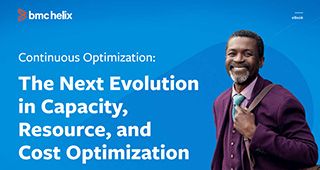Software and hardware components underpin every single product or service you offer. Managing these underlying components is a vital, value-driven activity in IT service management—but it isn’t easy. This management encompasses all of your company’s resources, from people, information, and technology to value streams, processes, and partners and suppliers.
To successfully manage these components, you must know what you have. This is a challenge for most organizations. Two ITSM practices, asset management and configuration management, guide you towards successful component management. These practices may overlap, but they aren’t the same: a CMDB contains some assets, but asset management goes beyond the configuration items that comprise configuration management.
In this article, we’ll define assets and configuration items (CIs), compare asset management and configuration management, and provide additional resources for you to explore.
Defining assets and configuration items
Before we jump into asset management configuration management, let’s talk about the differences between assets and configuration items—the pieces you’ll be managing. Here are two popular definitions:
- According to VeriSM(TM), an asset is defined as anything that is useful or valuable within a product or service. This value is generally determined financially: how much an asset costs versus how much it saves.
- ITIL defines a configuration item (CI) as any component that must be managed in order to deliver an IT service.
A cursory look might indicate these are the same, but they are not.
First, the similarities. Assets and configuration items both comprise the underlying components that deliver products and services to customers. In an ITSM environment, these components could include mobile apps, virtual servers, networking infrastructure, software licenses, and databases.
The biggest difference between the two? All configuration items qualify as assets, but not all assets are CIs. This is because of how both are managed.
For example, an asset could be your company’s capital, or the knowledge inside one developer’s head. These contribute to the end product but managing these assets directly in support of service delivery is neither practical nor possible. A configuration item, on the other hand, is subject to change control, which is baselined—and that’s not true for every asset.
Understanding configuration management
Let’s start with configuration management, as that has a smaller scope. Configuration management is focused on managing asset information that can be managed and controlled. This info includes attributes of CIs, like owner, type, version, etc., as well as how these CIs are configured and interact with other CIs when provisioning products and services. A configuration management database (CMDB) is a key component, as it stores CI records and helps manage the CIs directly.
If you must track incidents and problems related to an item or several items, particularly when planning, then you should track it as a CI. Change management applies to all configuration items. Well-executed change management contributes to:
- Successful product/service design
- Change control
- Troubleshooting
- Auditing of IT services for operational excellence
This is no easy task. Configuration management is considered a unicorn of service management. In fact, few real-world examples achieve configuration management that aligns with best practice. Configuration management requires a fine balance between managing configuration information. Too little information is not beneficial to related processes; too much detail results in excessive overhead and inefficient or ineffectual management.
Fortunately, configuration management systems (CMS) can simplify gathering information and identifying dependencies. A good CMS can also support the production of so-called service maps or models (see diagram below) that can visually demonstrate the dependencies between components in service delivery. These models can provide better visibility into design, deployment, and support of services throughout the lifecycle.

Other important activities in configuration management include:
- Identifying, adding, modifying, and removing CIs in the CMS
- Updating of CI information after changes have been executed on components
- Simulating impact on services when one or more CIs is modified or affected
- Auditing configuration records and dependency information to ensure they are up to date as well as for security and compliance purposes
What is asset management?
Asset management is both deeper and broader than configuration management. IT asset management (ITAM) is the practice of managing assets across their entire lifecycle.
An asset’s value is usually determined financially. When an organization spends money to acquire components, the cost and value are crucial in predicting whether the asset will provide a return on investment. These drivers determine which items should be tracked as assets:
- When an item has financial value (you must track its financial performance)
- When an item depreciates over time and will eventually reach end-of-life
Lifecycle management of assets is the core of this discipline. Activities include acquisition, operation, care, and eventual disposal. As suppliers are involved, the contractual aspects involving procurement, leasing, maintenance and support are additional areas of focus. Because assets have both economic and risk impact to the organization, matters of regulatory compliance also contribute to asset management: accounting standards, security compliance, and governance.
Other important activities in asset management can include:
- Labelling and tracking assets’ locations and states via an asset register
- Managing software licences to ensure compliance and value for money
- Tracking costs of cloud components and services
- Managing end-user devices to ensure security and compliance
- Auditing for finances worth and security compliance
- Handling decommissioned assets according to financial and data security policies
These drivers clearly apply to most, if not all, company resources, which explains how asset management can be a challenge.
Assets and CIs can overlap
Your company’s items or resources can easily qualify as both a configuration item and an asset. Let’s use an example of a server that stores applications:
- The server can require a CI record within your CMDB. This record includes configuration details such as installed software, the server’s interactions with other items, and more. In this case, the service desk would manage the server and any proposed changes must follow change management protocol.
- The server also qualifies as an asset. As a physical piece of hardware, you must track its financial value. The asset database does not require the details the CMDB maintains but does track the server’s lifecycle.
Instead of sweating the differences between assets and configuration items, the beneficial thing is to understand how the different management perspectives contribute towards good ITSM practices. While there is significant overlap between the management of these two, clarity can ultimately lead to full-value realization for your organization.
ITAM and CMDB software
Look no farther than BMC for related software solutions. BMC Helix Discovery helps your company discover, track, and manage your assets and configuration items. View our datasheet to see how automation delivers the data, insight, and tools to make the most of your assets.
For configuration management, BMC Helix CMDB establishes a single source of truth for your CIs. To learn more, see:







